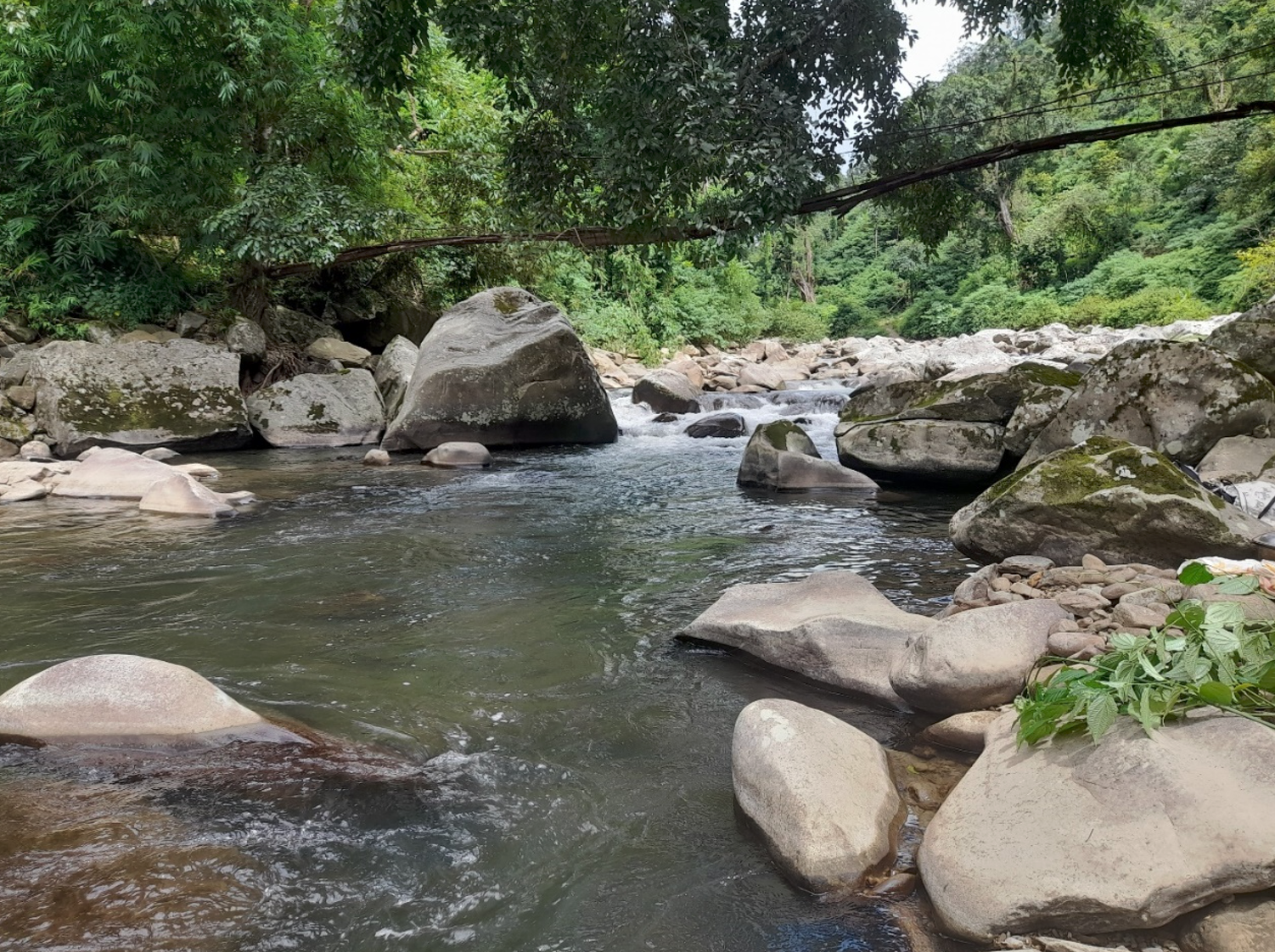Local knowledge and science come together to protect their aquatic resources in Poilwa village of Nagaland

The Tepuiki River, lying along the boundary of Nagaland and Manipur states of Northeast India, is a tributary of the large Barak River and one of NERAQ’s (Protection and Sustainable Management of Aquatic resources in the North-Eastern Himalayan Region of India) pilot sites where the local community of Poilwa village in Peren district, Nagaland is working closely with Kohima Science College (KSC) to protect its rich aquatic biodiversity by blending science and research with traditional knowledge into a sustainable ensemble.
As the pressure on the aquatic freshwater ecosystems in the North Eastern region of India steadily increase, mainly due to population growth, increasing intensity of use and climate change, systems for managing natural resources at village and community level are also eroding due to external political influences and social changes. As a result, aquatic freshwater ecosystems and their ecosystem services are being destroyed, with devastating consequences for fish and invertebrate stocks and the livelihoods of the riverine population. The NERAQ project intends to develop sustainable and climate-resilient management plans for aquatic ecosystems, by ensuring a full and effective participation of indigenous people and local communities in all decision making.
Traditional knowledge in the northeast region of India is central to all aspects of people’s lives from weather forecast, good seed germination, soil, water, or pest management to fostering social relationships and equity. The core of NERAQ objectives is an imperative shift of focus to a diverse, local knowledge base contextualized to regional, cultural, and traditional values to preserve the biodiversity of the aquatic ecosystems and build resilience in the face of climate change. To this end, different concepts of alternative sources of income to secure the long-term economic livelihood of the local population are to be developed and tested. Together with them, climate-related protection and use strategies are developed and implemented. Successful pilot measures are then incorporated into the development of protection plans at block, district and state level. As a transdisciplinary exercise, the pilot models bring together science, community and policy in a symbiosis.
With this objective, a team from the Zoology Department of KSC is carrying out inventory works together with the Zoological Survey of India (ZSI) to identify the aquatic resources in Nagaland’s Tepuiki River. Two important species of fish have been identified for conservation in Tepuiki-Snow Trout (Schizothorax richardsonii) and the Chocolate Mahseer (Neolissochilus hexagonolepis). Special attention is being given to the Snow Trout as it is not only a rare species but is also bio-indicator of climate change.
The Village Council and the youth of Poilwa along with the KSC team is presently carrying out surveys to identify the spawning grounds, the nurseries and feeding grounds of the Snow Trout in order to protect these areas and create a fish sanctuary. Further, paddy-cum-fish culture, paddy-cum-snail culture- both with indigenous species, awareness generation activities and eco-tourism activities are being initiated as conservation measures.
NERAQ’s approach sits in seamless alignment to India’s updated NDC on a mass movement for LIFE – ‘Lifestyle for Environment’ with a healthy and sustainable way of living based on traditions and values of conservation and moderation, as a key to combating climate change. Globally, a right step in this direction could lead to the aligning of existing systems, that may potentially reward us with concepts that have low environmental impacts, are culturally acceptable and economically accessible to all.
Link to further materials
Contact person
Patricia Dorn — Project Manager
Protection and Sustainable Management of Aquatic resources in the North-Eastern Himalayan Region of India (NERAQ)
Key buzzwords
Aquatic Resources, Biodiversity, Northeast India, Nagaland, Climate Change, Traditional Knowledge, Tepuiki, river

